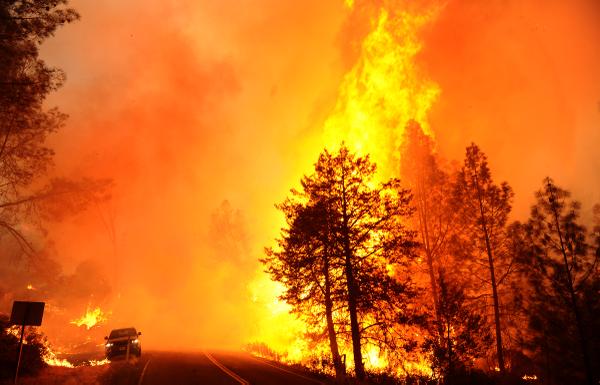Published in the August 29 – September 11, 2018 issue of Morgan Hill Life

Other states in the West have seen devastation from wildfire. The smoke from these infernos has drifted east as far as New York City. Locally, South Valley has seen its share of fires. Several homes in San Martin were burned in July and another wildfire in the Hecker Pass area of Gilroy was contained before damaging dwellings.
The 2018 fire season began much earlier than usual. Scientists caution that specific factors in the weather cannot be tied directly to global warming. But the unusual intensity and wide-spread range of the fires are the sorts of impacts climate experts have warned to expect from a planet that’s heating.
The prolonged drought served as a significant factor in this year’s wildfires. Many years of little rain were broken by a wet winter in 2016-2017, which provided the water for plants to grow. This was followed by an unusually dry period for the 2017-2018 winter, and that meant the California hills and mountains were covered with dead and dry grasses and dormant vegetation.
In the mountains, the drought-weakened trees received a double hit when bark beetle infestations hit. More than 100 million trees are dead in California alone, providing the kindling and fuel for an errant spark or a lightning strike to ignite.
The devastation to the landscape can be magnified if heavy rains follow. Charred hills become the setting for mudslides. We saw what happened in Montecito earlier this year when 15 people died as a river of mud hit their homes.
Natural fires have always been a part of California’s ecological profile. They clear the brush and provide a biological advantage to young seedlings to grow unencumbered by the competition for resources. The native Californians for centuries intentionally set fields of grass on fires to help Mother Nature in the cleaning of old vegetation — and encourage new growth that would attract deer and other animals for hunting.
But the state now has nearly 40 million people living in communities that sit in the heart of fire territory. The financial burden suppressing and fighting these catastrophes — as well as the costs of reconstruction of homes and infrastructure — will be heavy on taxpayers in coming decades as massive wildfires becomes increasingly common.
With the changes in the climate, the annual “fire season” has become essentially a year-long phenomenon, a CalFire administrator told us. Here in South Valley, we face the threat of thousands of acres going up in flames not just in the summer but fall and winter as well. That’s why we encourage readers who live in fire-prone regions to maintain brush-free areas around their houses. Create an escape plan for you and your family and have a designated site to meet. And resist heroics and immediately leave the area if emergency officials order an evacuation of your neighborhood.






